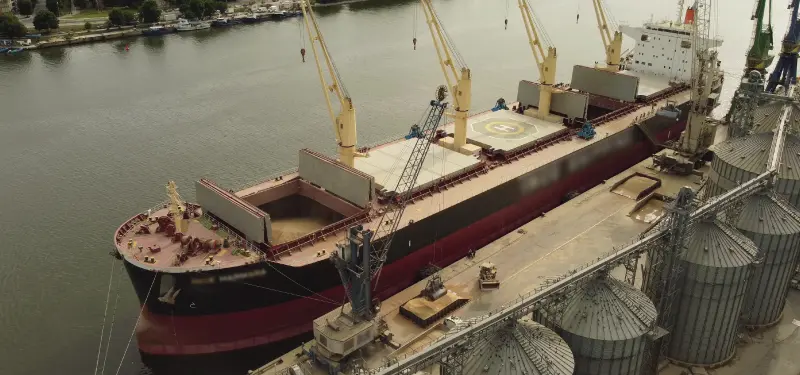Ship Classes – Type/CBM/DWT

Whether you are new to the maritime world or looking to expand your knowledge of commercial vessels, understanding how ships are classified is essential. From general and dry bulk carriers to tankers and LNG carriers, each ship type has unique characteristics that define its purpose, size, and operational constraints. In this blog post, we’ll explore the major ship types, examine how they’re categorized by cargo volume (often expressed in cubic meters, or CBM) and carrying capacity (measured in deadweight tonnage, or DWT), and explain why these classifications matter.
General and Dry Bulk Carriers
What They Carry
- General Cargo Ships: Designed to carry various types of packaged cargo (e.g., pallets, bundles, or crates), heavy machinery, and sometimes even smaller vehicles.
- Dry Bulk Carriers: Specialized for hauling unpackaged dry goods such as grain, iron ore, coal, and other raw materials in massive quantities.
Key Classifications by Size
Handysize (15,000–40,000 DWT)
- Typically used for smaller trades and can dock at ports with limited infrastructure.
- Commonly seen in regions where cargo volumes are moderate.
Handymax/Supramax (40,000–60,000 DWT)
- Slightly larger than Handysize and can accommodate bigger shipments of bulk commodities.
Panamax (60,000–80,000 DWT)
- Designed to pass through the original Panama Canal locks.
- Max beam of about 32.3 meters (106 ft).
Capesize (80,000–200,000+ DWT)
- Too large for the Panama or Suez Canals, so they often sail around the Cape of Good Hope or Cape Horn.
- Primarily used for iron ore and coal trades.
Why Size Matters
- Port Accessibility: Smaller vessels (Handysize) can enter ports with restrictive drafts, while larger ships (Capesize) require deep-water ports and specialized infrastructure.
- Economics: Larger vessels enjoy economies of scale but come with higher upfront construction and operating costs.
Tankers
What They Carry
- Crude Oil Tankers: Transport unrefined petroleum from extraction sites to refineries.
- Product Tankers: Carry refined petroleum products (diesel, gasoline, jet fuel).
- Chemical Tankers: Transport liquid chemicals, including acids, alcohols, and more.
Key Classifications by DWT
Handysize Tankers (10,000–40,000 DWT)
- Adaptable and can move smaller quantities of oil or chemical products.
- Serve ports with limited capacity.
Panamax Tankers (50,000–80,000 DWT)
- Similar to Panamax dry bulk ships, these tankers are built to pass through the original Panama Canal locks.
- Commonly used for regional trades where canal transit is advantageous.
Aframax (80,000–120,000 DWT)
- Ideal for short- to medium-haul routes.
- Often used in regions like the North Sea, Mediterranean, and parts of Asia.
Suezmax (120,000–200,000 DWT)
- Largest tanker size able to transit the Suez Canal.
- Typically used for longer routes, including cross-ocean voyages.
VLCC (Very Large Crude Carrier, 200,000–320,000 DWT)
- Primarily operates on long-haul routes, such as Middle East to Asia.
- Requires deep-water ports and specialized unloading facilities.
ULCC (Ultra Large Crude Carrier, 320,000–550,000+ DWT)
- Among the biggest vessels in the world.
- Mostly used for extremely high-volume crude oil transportation.
CBM Considerations for Tankers
For liquid cargo, cubic meters (CBM) can indicate how much total volume can be transported. While DWT reflects the total weight capacity, CBM is critical in understanding the ship’s actual hold or tank volume. For instance, two VLCCs with the same DWT might have different CBM capacities if their tank configurations vary.
LNG Carriers
What They Carry
Liquefied Natural Gas (LNG) carriers are purpose-built for the safe and efficient transport of natural gas. The gas is chilled to a liquid state (at about –162°C) to reduce its volume, making it easier to ship long distances.
Classification by CBM Size
Small-Scale LNG Carriers (up to ~30,000 CBM)
- Used for short coastal routes or feeder services.
- Ideal for regions with lower demand or where infrastructure is developing.
Conventional LNG Carriers (~125,000–175,000 CBM)
- The workhorses of the LNG trade.
- Commonly equipped with spherical Moss tanks or membrane containment systems.
Q-Flex and Q-Max (210,000–266,000+ CBM)
- Among the largest LNG carriers, predominantly servicing routes from the Middle East (Qatar) to Asia and Europe.
- Benefit from economies of scale but require specialized berthing facilities.
Role of DWT in LNG Carriers
While LNG is measured primarily by CBM, DWT still plays a role in determining total carrying capacity, including fuel, crew, and other consumables. However, the industry more often references the CBM capacity when discussing LNG carriers because the volume of liquefied gas is the most relevant measure for charterers and operators.
Why These Classifications Matter
- Operational Efficiency: Matching the right ship size to the intended trade route ensures efficiency. Larger ships reduce transportation costs per unit but may face port or canal restrictions.
- Regulatory Compliance: Certain ports or maritime authorities have rules limiting vessel size or type. Knowing these classifications helps operators plan feasible routes and comply with local regulations.
- Cargo Handling Requirements: Each vessel type uses specialized handling equipment. For instance, dry bulk carriers rely on conveyor or grab crane systems, while tankers use pumps and advanced liquid-handling technologies, and LNG carriers require cryogenic technologies.
- Market Dynamics: Freight rates, chartering contracts, and financing often depend on vessel classification. Larger tankers (e.g., VLCCs) and bigger LNG carriers typically command different rate structures than smaller or more specialized ships.
Final Thoughts
Ship classification goes beyond simple labels—it shapes global trade routes, impacts operational costs, and influences the broader economic landscape of the maritime industry. Whether you are in shipping operations, trading commodities, or simply fascinated by the workings of global logistics, appreciating the distinctions between general/dry bulk carriers, tankers, and LNG carriers—as well as understanding CBM capacity and DWT—is key to navigating this complex world. By choosing the right vessel for the job, operators not only optimize cost and efficiency but also help ensure the safety and reliability of global commerce.

